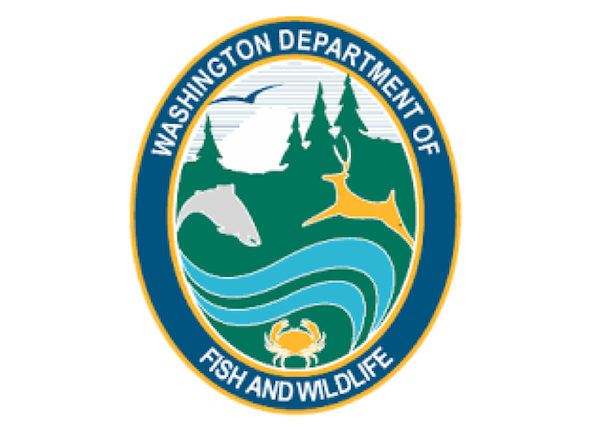Idaho Fish Report
WDFW seeks public input on 2023 proposals for Washington's ocean salmon fisheries

by WA Department of Fish & Wildlife Staff
3-10-2023
Website
OLYMPIA – Fishery managers have developed options for Washington's ocean salmon fisheries that reflect improved forecasts for some key Columbia River Chinook stocks and a second consecutive year of large forecasts for hatchery coho returning to the Columbia River.
The Pacific Fishery Management Council (PFMC), which brings tribal, federal, and state entities together to establish fishing seasons in ocean waters three to 200 miles off the Pacific coast, approved three options for ocean salmon fisheries for public review. These ocean options will help inform other Washington salmon fisheries as the season-setting process continues.
"This year's options reflect increases to Columbia River Chinook forecasts and hatchery coho forecasts similar to last year," said Kyle Adicks, Intergovernmental Salmon Manager for the Washington Department of Fish and Wildlife (WDFW). "Returns of stocks listed under the Endangered Species Act will continue to limit salmon fisheries in the ocean as well as in inland marine and freshwater areas."
The options for 2023 include the following quotas for state recreational fisheries off the Washington coast:
Option 1: 42,500 Chinook and 168,000 marked coho.
- La Push and Neah Bay (Marine Areas 3 and 4): June 17-Sept. 30 Chinook and marked coho fishery. No Chinook retention east of the Bonilla-Tatoosh line beginning Aug. 1. A tentative La Push Chinook-only bubble fishery opens Oct. 3-7 in the La Push Late Season Salmon Area.
- Westport (Marine Area 2): June 24-Sept. 30 Chinook and marked coho fishery.
- Columbia River area (Marine Areas 1): June 24-Sept. 30 Chinook and marked coho fishery.
Option 2: 37,500 Chinook and 155,400 marked coho.
- La Push and Neah Bay (Marine Areas 3 and 4): June 24-Sept. 30 Chinook and marked coho fishery. No Chinook retention east of the Bonilla-Tatoosh line beginning Aug. 1.
- Westport (Marine Area 2): July 1-Sept. 30 Chinook and marked coho fishery.
- Columbia River area (Marine Area 1): June 24-Sept. 30 Chinook and marked coho fishery.
Option 3: 32,500 Chinook and 142,800 marked coho.
- La Push and Neah Bay (Marine Areas 3 and 4): July 1-Sept. 24 Chinook and marked coho fishery. No Chinook retention east of the Bonilla-Tatoosh line beginning Aug. 1.
- Westport (Marine Area 2): July 2-Sept. 30 Chinook and marked coho fishery. This area would be open five days per week (Sunday-Thursday) under this alternative.
- Columbia River Area (Marine Area 1): June 26-Sept. 24 Chinook and marked coho fishery.
Under these scenarios, fishery managers will monitor the number of salmon caught by recreational anglers and may close earlier than the above dates, if quotas are met. For more details about the options, visit PFMC's webpage. There will be a public hearing on the options at 7 p.m., Monday, March 20 at the Chateau Westport, 710 South Hancock Avenue in Westport. More information on that meeting is available on PFMC's website.
Managers use public feedback on these options to negotiate a final season among states and tribes represented at PFMC, refined to incorporate preferences shared by the public.
Chinook and coho quotas and seasons approved by the PFMC will be part of a comprehensive 2023 salmon-fishing package, which includes marine and freshwater fisheries throughout Washington. State and tribal co-managers will complete the tentative 2023 salmon fisheries package in conjunction with PFMC during its April 2-7 meeting in Foster City, Calif.
The collaborative state and tribal salmon season-setting process, known as North of Falcon, refers to waters north of Oregon's Cape Falcon, which marks the southern border of Washington's management of salmon stocks.
For more information about the science behind salmon season-setting in Washington, watch "Sound Management: Conserving Pacific Northwest salmon through conservation" on the WDFW's YouTube channel.
For a full timeline of the state's North of Falcon process, including a meeting schedule with opportunities to participate in public meetings and provide feedback, visit WDFW's North of Falcon public meetings webpage. Any additional meetings will be added as they are scheduled. WDFW-hosted meetings will be held in-person or in virtual and hybrid formats for the public to watch or listen.
Other ways the public can participate in the state's process include:
- Online comments: The public can now provide general comments on potential fisheries at WDFW's North of Falcon public input webpage. Additional comment opportunities on specific seasons and fisheries will be available as forecasts and proposed season summaries are made available.
- Conference calls and daily briefings: During the final days of negotiations, state fish managers plan to hold briefings each day, which will be available via virtual meeting.
The Washington Department of Fish and Wildlife works to preserve, protect, and perpetuate fish, wildlife and ecosystems while providing sustainable fish and wildlife recreational and commercial opportunities.


